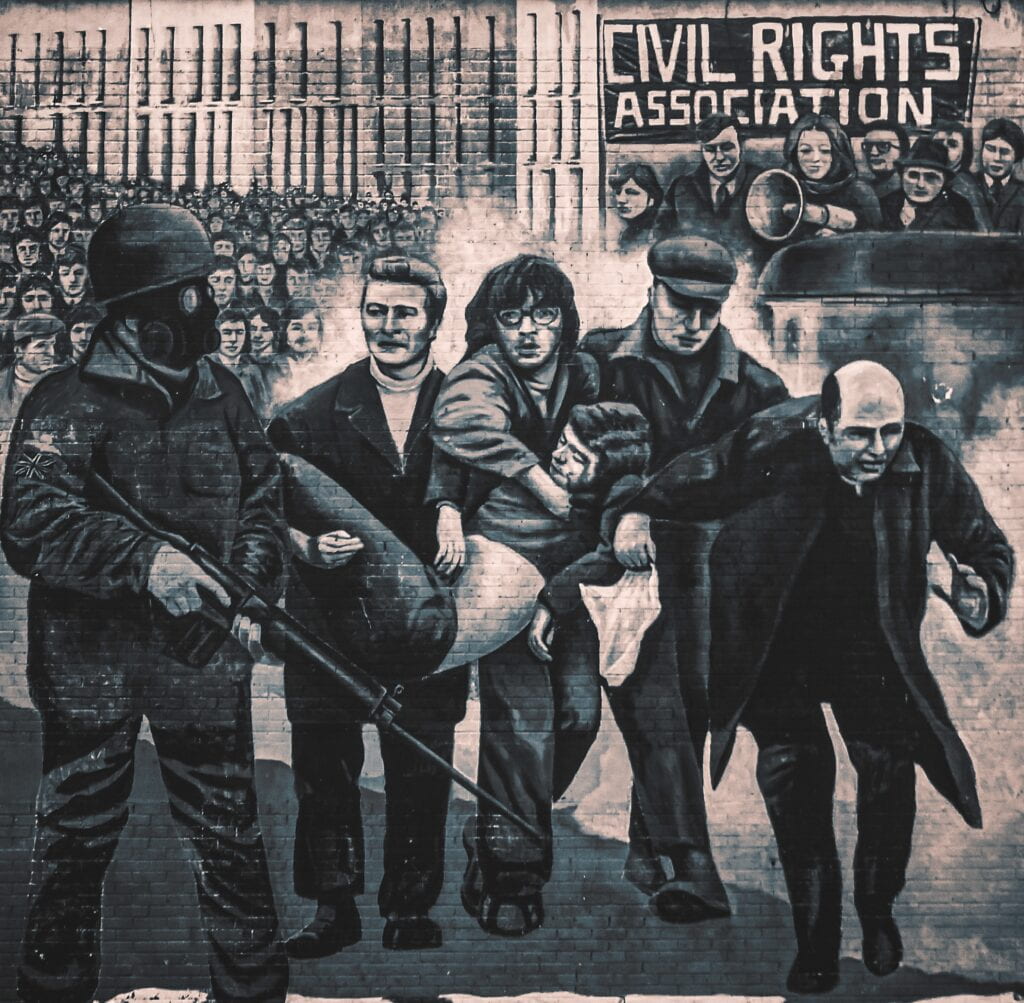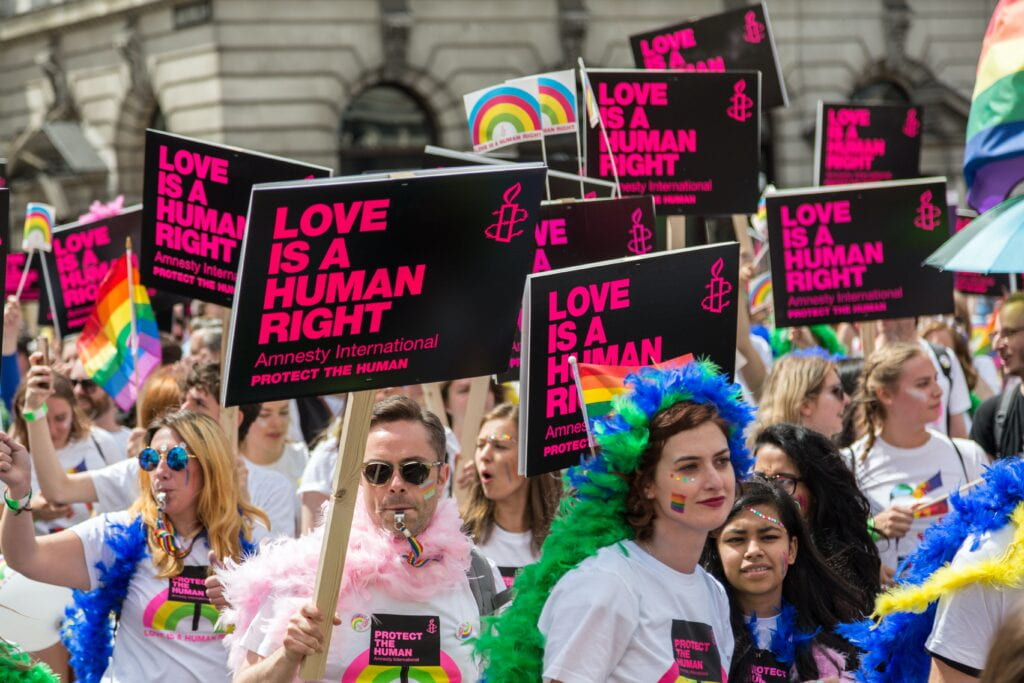By: Matias Azcarate

This piece explores the complex and often tense diplomatic relationship between Peru and Venezuela over the last decade. It delves into how differing political ideologies, the significant influx of Venezuelan immigrants, and allegations of electoral fraud have shaped Peru’s foreign policy, often driven by public sentiment and leading to confrontational rhetoric rather than concrete solutions.
Introduction
After the transition to democracy in 1958, Venezuela’s foreign policy was based on the doctrine of Puntofijismo, a political agreement between the three main political parties which facilitated Venezuela’s transition to democracy and established a policy based on democratic principles. When Hugo Chavez came to power in 1999, he continued this path. It was not until 2004 that social pressure, after a failed coup, forced him to change his domestic and foreign policy to what he called 21st century Socialism. The Venezuelan international policy was turned into an extension of domestic politics. In comparison with Puntofijismo, the basis of Chavez’s 21st century Socialism was to denounce American imperialism and strengthen their national sovereignty—meaning they would not allow any interference their national affairs and would condemn anything that went against their project or that was aligned with the United States (Salazar Elena 226). The fulfillment of these objectives caused confrontations with countries that did not share these same ideals, generating a climate of hostility. One of these countries was Peru. Their political ideals surrounding foreign policy, immigration, and political institutions differed from the Venezuelan ideals, generating a complex diplomatic relationship. However, in 2016, a new factor began to trigger tension and hostility between both countries: the immigration of more than 500,000 Venezuelans caused by a political crisis.
Venezuela’s crisis
In 1982, Hugo Chávez founded the Bolivarian Revolutionary Movement-200, a leftist civil-military revolutionary group aimed at confronting Venezuela’s political establishment through violent means. However, after two failed coups (in 1992), he shifted his approach and opted for the democratic route—seeking election through the ballot box. Chavez effectively led a campaign centered on implementing a new leftist economic system in Venezuela and tackling corruption, which culminated in his election as president in 1999 (Sylvia and Danopoulos 66–69).
Following a failed coup attempt against him in 2002, Chávez recognized that he needed to seize control of institutions by amending the constitution to retain power. Consequently, in 2004, he called for a referendum to solidify his legitimacy and showcase that the public supported the more radical measures he intended to implement. This year marked the beginning of the erosion of democracy in Venezuela, as he started to capture political institutions to break with the check and balance system and rule without interference.
Hugo Chávez’s initial strategy to seize control of institutions involved forming a majority coalition in Congress with his party Movimiento V República (Fifth Republic Movement) and its allies. He enacted a court-packing law that enabled his coalition to secure an overwhelming majority of seats on the Supreme Court, effectively undermining judicial independence. To further consolidate his power, he appointed a crucial figure in his administration, Alí Rodríguez, to lead the national oil company, Petroleum of Venezuela. This decision enabled the government to control the principal state income source and invest it in welfare policies to gain the public support (Roy).
Following Hugo Chávez’s death on March 5, 2013, Nicolás Maduro assumed the presidency after winning the April election with 50.61% of the vote (Roberts 33). Despite this electoral victory, the opposition held a qualified majority in Congress. In response to this situation, Maduro further entrenched Chavez’s influence over political institutions. He utilized the majority of Supreme Court justices—appointed under Chávez—to restrict the powers of Congress. When Congress did not comply with the court’s directives, it was forcibly dissolved. Ultimately, in 2017, Maduro convened a national constituent assembly to draft a new constitution, enabling him to govern without any checks on his authority (Roberts 32).
Amid the political crises, the Venezuelans bore the brunt of the suffering. In 2016, Venezuela’s extreme poverty levels reached 51.51% (Roy). Many Venezuelans could not meet their fundamental needs—such as access to healthcare, food, water, and electricity—leaving them completely vulnerable. This dire situation compelled many to migrate to other countries, particularly Peru, for a higher quality of life. The first Venezuelan migration wave to Peru consisted of men between 18 and 39, single persons with bachelor’s degrees, half of those men with kids.
Peruvian response to the immigration crisis and the diplomatic conflicts it generated
(2016-2017)
In 2016, Pedro Pablo Kuczynski became the president of Peru. His election represented the beginning of a ‘good neighbor’ policy to Venezuelan migrants and a hard foreign policy opposed to Maduro’s regime in Venezuela (Mazza and Forero Villarreal 659) Kuczynski denounced the human rights conditions and didn’t have problems expelling the Venezuelan ambassador from Peru (660). However, he enacted his bold policy through a Supreme Decree by providing a Temporary Permanence Permit (TPP), which allows immigrants to reside and access to education, employment, and health for one year while regularizing their migratory situation. Kuczynski’s government renewed the TPP four times during his administration (660). In Kuczynski’s administration, Peru implemented one of the most accommodating immigration policies for Venezuelans in the region since, compared to their situation in other countries, Venezuelans were granted access to essential services while their immigration status was being processed.
Since his inauguration as President of Peru, Pedro Pablo Kuczynski made it clear that he wanted Peru to become a regional leader—“I want Peru to be a beacon of civilization in the Pacific and South America that everyone looks at with admiration. A country that assumes leadership in regional cooperation and integration, that is linked to the needs and well-being of the population in border areas, of which we do not take enough care, and also takes care of the needs of entrepreneurs [among the] Peruvian migrant community.” (“Quiero que el Perú sea un faro de civilización en el Pacífico y Sudamérica al que todos miren con admiración. Un país que asuma el liderazgo en la cooperación e integración regional, que se vincule con las necesidades y el bienestar de la población de zonas fronterizas, de las cuales no nos ocupamos suficientemente, y que se ocupe, también, de las necesidades de la emprendedora comunidad peruana de migrantes.”; my trans.;Kuczynski). Kucyzynski’s strategy aims to extend the Peruvian soft power through migration diplomacy (Adamson and Tsourapas 113-128). The Peruvian government made a concerted effort to welcome Venezuelan immigrants to enhance its international standing while engaging in diplomatic initiatives—including participation in forums and meetings with other nations—to seek effective solutions to the political crisis in Venezuela.
The starting point for the complex relationship between Peru and Venezuela was when Kuczynski addressed the United Nations General Assembly, saying, “We, in solidarity, make a firm call for an internal political dialogue [in Venezuela] to begin as soon as possible without conditions or restrictions within a framework of full respect for the Constitution.” Venezuela’s envoy to the UN, Rafael Ramírez, described Kuczynski’s words as “a gratuitous attack.” He further asserted by saying “It was a regrettable speech by the president of Peru (Bronstein)” Peru’s foreign objective—to be a defender of democracy in the Pacific—collided with Venezuela’s authoritarian and isolationist regime.
Later, in March 2017, Kuczynski addressed the public after receiving the James Madison Medal from Princeton University, describing Latin America as a nice dog: “The United States focuses on areas with problems, such as the Middle East. It does not invest much time in Latin America because it is like a friendly dog that is sleeping on the rug and does not cause any problems … but the case of Venezuela is a big problem. (Kuczynski Godard)” These comments elicited the Venezuelan government’s anger because Venezuela followed a very nationalist policy that wouldn’t permit Latin America to be compared with a dog. Dolcy Rodriguez, Venezuela’s Minister of Foreign Affairs, called the president of Peru a coward and nice dog at a press address. Two days later, Nicolás Maduro also criticized Kuczynski’s words, warning: “Be careful what you say (The Guardian).” The Peruvian government immediately rejected these declarations, calling them insolent, sent a démarche—a diplomatic document expressing rejection to Maduro’s declaration—and called their ambassador in Caracas for consultation (BBC News). In late March, after the Supreme Court of Justice of Venezuela assumed the functions of the National Assembly—-breaking completely with democracy—the Peruvian government withdrew its diplomat in Caracas and expelled the Venezuelan diplomat because they were not going to support a country that broke the democratic system.
In August 2017, the Peruvian government, under Kuczynski’s mandate, created an ad hoc group to tackle Venezuela’s crisis: the Lima Group, which had as its primary goal the peaceful restoration of democracy in Venezuela (Arévalo and Huerta). The ad hoc group is an alliance of 14 Latin American countries that positioned themselves against the Government of Venezuela. The group sought to pressure the Maduro regime through joint statements and meetings. However, the Lima Group did not know how to use the carrot-and-stick, which generated greater conflict with Venezuela: In a press conference, Maduro said he received a letter inviting him to attend a Lima Group meeting and assured them that he would assist (Phillips) The Minister of Foreign Affairs tweeted the letter they had received last year (2017). Later, the Minister of Foreign Affairs of Peru said that “[Maduro’s] presence will not be welcome (Phillips) .” After removing the invitation, Maduro continued challenging the group by saying he would attend the conference.
Kuczynski’s administration approach resulted in 248,038 Venezuelans entering Peru and processing the TPP from February 2, 2017, to September 30, 2018. However, only about a fifth obtained it (National Institute of Statistics and Informatics). During this period, the Peruvian-Venezuelan diplomatic relationship was marked by public attacks, demarchés, and the breaking off of diplomatic relations because the countries’ political ideals were at odds. The acclaimed author of “International Conflict in Latin America,” Walter Little, refers to such events as “system-ideological” conflict—arising from the differences between regimes and their political goals and means (Little 591-605).The second strategic goal of the Peruvian foreign policy was “[the] promotion of respect for human rights, the values of democracy and the rule of law, as well as promoting the fight against corruption, drug trafficking and terrorism at the level of international relations through concrete initiatives and dynamic participation in the corresponding regional and global mechanisms (Ministry of Foreign Affairs of Peru).” In contrast, Venezuela perceived these values as threatening their domestic policy and used confrontational dialect to defend their national sovereignty. Peru was perceived as an enemy because it advocated for democratic values aligned with the U.S. that were against Venezuelan ideals and represented North American imperialism.
(2018-2019)
In March 2018, Martin Vizcarra succeeded Kuczynski. By the time Vizcarra took office, the presence of Venezuelans had already begun to cause discontentment among Peruvians. They feared that Venezuelans would take away their jobs—as well as an increase in crime and insecurity. In August 2018, President Vizcarra’s administration issued Decree 007, which moved up the deadline for applying for the Temporary Permanence Permit (TPP) from June 30, 2019, to December 31, 2018 (Mazza and Forero Villarreal 662). Moreover, Venezuelan applicants for the TPP must have entered Peru before October 31, 2018. Following this decree, in October 2018, the government introduced a new resolution mandating that Venezuelans must present a valid passport to qualify for the TPP. However, these new requirements did not significantly affect the situation as Venezuelans discovered alternative routes to avoid the border controls. In November 2018, more than 6,700 Venezuelans entered Peru per day (662).
In 2019, approximately 800,000 Venezuelans lived in Peru. Citizens’ discontent with Venezuelans grew—77% of Peruvian citizens consulted saw Venezuelan immigration as something negative (Center for Strategic Studies of the Peruvian Army). At the same time, Vizcarra’s approval rating decreased from 56% to 44% (Reuters). These factors triggered Vizcarra’s mano dura strategy to tackle Venezuelan immigration—a political behavior driven by a violent narrative against a common enemy and the use of violence to repel it. Under this approach, he started by portraying himself as a strong man against immigrants who threatened Peruvians through press conferences: “Here, we are not going to allow people who commit crimes to continue. (We will expel) those who are necessary: 500, 800, 1,000, or 2,000 (Taj)”. Then, he added more restrictions on immigration: immigrants will need not only a passport but also a humanitarian visa, which is requested at the consulate of Peru in Venezuela (Mazza and Villarreal 664). Another characteristic of this new stand was deportation—in the same month, 50 Venezuelans were deported.
In addition, the increased detention of Venezuelans—Peruvian police arrested 1,718 Venezuelans who were part of criminal bands—was used by citizens and politicians to justify xenophobic acts (García 143). For instance, Congresswoman Esther Saavedra said during a parliamentary discussion: “A million immigrants, both legal and illegal, between workers and criminal bandits, have to eat, have to sleep, come to take jobs from our Peruvians. (…) Good or bad, they have to leave Peru. Throw them away (Sequera).” On the side of the citizens, they began threatening, attacking, and harassing Venezuelans. The Peruvian government’s mismanagement of the migration crisis awakened friction between Peru and Venezuela. The Venezuelan government, through a statement from the Foreign Ministry, repudiated these types of acts of “xenophobia, aggression and persecution” against its citizens who have moved to Peru (Maza and Villareal 664). In addition, Maduro mentioned in a press conference that “If the UN gives [him] US$200 million, [he] will bring all the Venezuelans from Peru in one month” and called Vizcarra xenophobic (Sequera). The Government of Peru strongly rejected the accusations of acts of xenophobia and added that “the illegitimate and dictatorial regime of Nicolás Maduro was solely responsible for the humanitarian catastrophe in Venezuela …”(Sequera). The tensions didn’t end there. Later in 2019, Maduro won the elections in Venezuela again, and Vizcarra tweeted, “An illegitimate and dictatorial regime has just been installed in Venezuela today. We raise our voice of protest to defend democracy in Latin America”. In addition, the Peruvian government called the Chargé d’Affaires of the Peruvian embassy in Venezuela, Rosa Álvarez, for consultations. Maduro’s regime answered through a demarché in which they urged the Peruvian State to rectify its position on the legitimacy of Maduro’s mandate within 48 hours.
(2020-2021)
In March 2020, the government declared an emergency lockdown to tackle the spread of the COVID-19 virus. At the beginning of the lockdown, not all Venezuelans could access the National Health system since it required a foreign identification card, which not everyone had. Then, in April 2020, the Peruvian government made it available to all foreigners, regardless of their regular or irregular entry into the country, if they presented symptoms of COVID-19 (Mazza and Villareal 664). Later, in October, the government of Martín Vizcarra approved a decree that accepted temporary procedures to regularize the immigration status of Venezuelans with irregular status.
The tension between Peru and Venezuela during Vizcarra’s administration can be traced back to the two nations’ contrasting foreign policies. The Venezuelan government demonstrated a lack of acceptance toward the Peruvian authorities’ critical remarks, resulting in a series of diplomatic clashes characterized by démarches and public confrontations. Additionally, immigration emerged as a significant factor contributing to the discord. Peru’s perception of the influx of Venezuelan immigrants as a potential threat to national security prompted the government to implement measures for their expulsion. This response was met with disapproval from the Venezuelan government, whose nationalistic principles dictate that their citizens should not be subjected to mistreatment abroad. The interplay of the political ideals regarding foreign policy and immigration prompted the complex relations between the two countries.
Congress vacated President Vizcarra at the end of 2020 due to a corruption scandal related to buying Covid vaccines. The Peruvian constitution mandates that when there is no vice-president, the successor should be the President of the congress, In this case, Franciso Sagasti, who had a short period of one year to solve the Covid crisis and call for new elections. In front of this, he opted to maintain the status quo by ensuring that everyone within Peru, including Venezuelans, could be vaccinated and made the application of the TPP systematic (Mazza and Villareal 663). The diplomatic relationship with Venezuela was not a priority to him.
(2021-2022)
In 2021, Pedro Castillo, a rural leftist professor, won the presidential elections only by 44,263 votes more than his opponent Keiko Fujimori (Mazza and Villareal 664). During the presidential campaign, Castillo was adamant regarding Venezuelan immigration, “We will give 72 hours to those who have come to disrespect us [referring to Venezuelans].” Castillo planned to expel all the Venezuelans. On December 23, Castillo’s government attempted to expel 41 Venezuelans who had been detained for being involved in various criminal acts in the country but did not obtain authorization from the Government of Venezuela for their plane land in their country (664). This incident was embarrassing and showed the inefficiency of the Peruvian administration.
Citizen hostility towards immigration incentivized Castillo to employ a mano dura immigration approach—violent speeches, arbitrary detentions of Venezuelans, and attempts to deport them. The Peruvian government no longer saw immigration as a means of projecting soft power—-as with Kuczynsk’s administration—but as a security issue (Adamson and Tsourapas 115). This approach was met with discontent from the Venezuelan government. In 2022, after a failed coup d’état, Congress ousted Pedro Castillo and replaced him with his Vice President, Dina Boluarte.
(2023-2024)
Boluarte continued with a mano dura strategy, as did her predecessors. For instance, in January 2023, in a press conference, Boluarte announced that the government would temporarily send the military to various points on the borders with Ecuador, Colombia, Brazil, Bolivia, and Chile to reinforce the border control carried out by the police. The president concluded the press conference by saying, “During the government of Pedro Pablo Kuczynski free entry was allowed to any citizen who wanted to enter. Unfortunately, they are the ones who are committing criminal acts (Aquino).”
During Boluarte’s administration, two significant events occurred: citizen insecurity continued to increase, and Maduro was reelected. The response to the first event was the typical Peruvian remedy: hardening the immigration policy by militarizing the borders and increasing the requirements to enter Peru (Aquino). For the second event, Peru’s response was similar to Peru’s role with Kuzcynski. On July 28, 2024, Maduro was reelected in elections with signs of fraud where the opposition candidate Edmundo Gonzalez was the favorite (Rogero). Both the opposition party and international observers, such as the Carter Center, presented data about the alleged fraud that had been committed, such as the real amount of votes that Edmundo Gonzalez received. Faced with this event, the Peruvian government was the first country to recognize Edmundo Gonzalez as elected president. In addition, at an extraordinary session of the Organization of American States, the Minister of Peruvian Foreign Affairs, Javier González-Olaechea, showed an active role in condemning the Maduro regime and promoting a joint statement with all member states to condemn the fraudulent elections (U.S. Mission Lima) Subsequently, the Venezuelan Government broke diplomatic relations with Peru (Reuters). Maduro’s regime considered the declarations of Peru to have ignored the national will and characterized them as interventionist actions (Reuters).
Democratic institutions and fair elections are crucial for Peru. In contrast, in Venezuela, the electoral system is controlled by Chavez sympathizers. This difference in political institutions, combined with the indication of electoral fraud, led Peru to show its discontent with Venezuela and take protest measures against the Venezuelan government, generating diplomatic conflicts between both countries and resulting in severing diplomatic ties.
Conclusion
In the last decade, Peruvian-Venezuelan diplomatic tensions were rooted in differing political ideals regarding foreign policy, immigration, and political institutions. Kuczynski’s administration strictly complying with the Peruvian foreign policy aiming to position Peru as a regional leader collided with Venezuela’s efforts to enhance their 21st Century Socialism in the region. However, during Vizcarra’s mandate, the differences with Venezuela regarding foreign policies became secondary and replaced by the influx of Venezuelan immigrants as a potential threat to national security. This situation prompted the government to implement a mano dura immigration approach. At the end of Vizcarra’s administration, it was proved that this mano dura approach was more a discourse than a concrete strategy because the number of Venezuelans in Peru did not decrease. The administration that followed Vizcarra—Pedro Castillo’s—continued with the same approach. Finally, the current government, Dina Boluarte, has continued mimicking the same mano dura discourse—again without significant results, just a confrontative narrative. The only concret action taken was in front of the alleged electoral fraud in Venezuela. This disparity in political systems, coupled with allegations of electoral fraud, prompted Peru to express its discontent with Venezuela.
Despite the opposing ideals of each country, citizens, especially Peruvians, have had a significant role in shaping the Peruvian government’s policy decisions. Whenever an administration perceives that there is people discontent regarding Venzuelan’s immigrants, they deliver a more aggressive discourse and promise to take actions to decrease immigration. However, since diplomatic ties with Venezuela are broken, there are no solutions. If Peru wants to solve its problems with Venezuela—especially the immigration issue—channels of dialogue must be established and support must be sought from other Latin American countries. Otherwise, immigration will continue to increase, along with the diplomatic conflict.
*****
Matias Azcárate is a sophomore at NYU, double majoring in Public Policy and Politics and minoring in Management and Public Policy. His specialization lies in Latin American and Peruvian politics.
*****
Works Cited
Adamson, Fiona B., and Gerasimos Tsourapas. “Migration Diplomacy in World Politics.” International Studies Perspectives, vol. 20, no. 2, Dec. 2018, pp. 113–28. https://doi.org/10.1093/isp/eky015.
Arévalo, Oscar Vidarte, and Andrea Rivas Huerta. “Peru’s Leadership in the Lima Group: Emergence and Failure (2015–2021).” Frontiers in Political Science, vol. 6, Oct. 2024, https://doi.org/10.3389/fpos.2024.1494992.
Aquino, Marco. “Peru to Scrutinize Venezuelan Remittances Amid Crime Concerns.” Reuters, 22 Oct. 2024, www.reuters.com/world/americas/peru-monitor-venezuelan-migrants-remittances-amid-crime-fears-2024-10-22.
BBC News. “Peru Recalls Ambassador in Caracas Amid Diplomatic Spat.” BBC News, 7 Mar. 2017, www.bbc.com/news/world-latin-america-39188482
Bronstein, Hugh. “Peru Brings up Venezuela Crisis at U.N., Venezuela Swipes Back.” Reuters,
20 Sept. 2016, www.reuters.com/article/world/peru-brings-up-venezuela-crisis-at-un-venezuela-swipes-back-idUSKCN11Q2YN.
“Carter Center Statement on Venezuela Election.” The Carter Center, www.cartercenter.org/news/pr/2024/venezuela-073024.html?s_src=cartercenter&s_subsrc=search&gad_source=1&gad_campaignid=20600763275&gbraid=0AAAAAD_jeJ6De1WYEnorFzKVqUYjoHzSZ&gclid=EAIaIQobChMIpdftroz-jAMVAmZHAR1OKS_dEAAYASAAEgKFfvD_BwE.
Center for Strategic Studies of the Peruvian Army. Venezuelan Migration in Peru: Perceptions and Realities. 23 Mar. 2023, https://ceeep.mil.pe/2023/03/23/venezuelan-migration-in-peru-perceptions-and-realities/?lang=en.
García, Luis Fernando. “The ‘Chamos’ in Prison: Venezuelans in Peruvian Jails.” Anthropológica, vol. 42, no. 52, 2024, pp. 143–197. https://doi.org/10.18800/anthropologica.202401.006
Kuczynski Godard, Pedro Pablo. “Mensaje a la Nación del Señor Presidente Constitucional de la República, Señor Pedro Pablo Kuczynski Godard.” Speech, Lima, Peru, July 28, 2016. Presidencia del Perú. https://www.presidencia.gob.pe/docs/mensaje28julio2016.pdf.
Little, Walter. “International Conflict in Latin America.” International Affairs, vol. 63, no. 4, Jan.
1987, pp. 589–601. https://doi.org/10.2307/2619639.
Phillips, Tom. “Venezuela’s Neighbours Turn up Heat as Nicolás Maduro Begins Second Term.” The Guardian, 9 Jan. 2019, www.theguardian.com/world/2019/jan/09/venezuela-nicolas-maduro-second-term-neighbours-latin-america.
Kuczynski Godard, Pedro Pablo. “Peru’s Kuczynski Talks Trump, Venezuela, Trade During Princeton Speech.” Reuters Archive Licensing, 20 Sept. 2017, Princeton University, Princeton, NJ. Speech. reuters.screenocean.com/record/308735.
Mazza, Jacqueline, and Nicolás Forero Villarreal. “Perú and Migration from Venezuela: From Early Adjustment to Policy Misalignment.” The Palgrave Handbook of South–South Migration and Inequality, edited by Jacqueline Mazza and Nicolás Forero Villarreal, Palgrave Macmillan, 2024, p. 653-678. https://link.springer.com/chapter/10.1007/978-3-031-39814-8_30
Ministry of Foreign Affairs of Peru. Foreign Policy. Government of Peru, http://www.rree.gob.pe/politicaexterior/paginas/home.aspx.
National Institute of Statistics and Informatics (INEI). Sociodemographic Characteristics of Venezuelan Citizens Residing in Peru, According to the Results of the “Survey Directed at the Venezuelan Population Residing in the Country, ENPOVE 2018.” Government of Peru, 2019.
https://cdn.www.gob.pe/uploads/document/file/1260611/Caracteristicas-sociodemograficas-de-ciudadanos-venezolanos.pdf.
Roberts, Samuel Raphael. The Fall of Democracy and the Rise of Authoritarianism in Venezuela. 1 Apr. 2020, pp. 30–33. https://escholarship.org/uc/item/5mj6j3t8
Rogero, Tiago. “Evidence Shows Venezuela’s Election Was Stolen – but Will Maduro Budge?” The Guardian, 6 Aug. 2024, www.theguardian.com/world/article/2024/aug/06/venezuela-election-maduro-analysis.
Roy, Diana. “Venezuela: The Rise and Fall of a Petrostate.” Council on Foreign Relations, 31 July 2024. https://www.cfr.org/backgrounder/venezuela-crisis
Reuters. “Peru President Vizcarra Swears in Actor as New PM.” Voice of America, 12 Mar. 2019, www.voanews.com/a/peru-president-vizcarra-swears-in-actor-as-new-prime-minister-/4825090.html.
Reuters. “Peru Orders Venezuelan Diplomats Out After Contested Vote.” Reuters, 30 July 2024, www.reuters.com/world/americas/peru-orders-venezuelan-diplomats-leave-country-within-72-hours-2024-07-30.
Salazar Elena Rodrigo. “La política exterior de Hugo Chávez.” Biblat, 2008, p. 226. https://revistadigital.sre.gob.mx/index.php/rmpe/article/view/682
Sequera, Vivian. “Venezuela Chides Peru for ‘xenophobia’ Against Migrants.” Reuters, 30 Sept. 2019, www.reuters.com/article/world/venezuela-chides-peru-for-xenophobia-against-migrants-idUSKBN1WF065.
Sylvia, Ronald D., and Constantine P. Danopoulos. “The Chávez Phenomenon: Political Change in Venezuela.” Third World Quarterly, vol. 24, no. 1, 2003, pp. 63–76. JSTOR, http://www.jstor.org/stable/3993630
Taj, Mitra. “Peru President Vows to Keep Deporting Venezuelans with Criminal Records.” Reuters, 7 June 2019, https://www.reuters.com/article/world/peru-president-vows-to-keep-deporting-venezuelans-with-criminal-records-idUSKCN1T80DA/.
The Guardian Staff. “Venezuela Calls Peru’s President a ‘Coward’ and a ‘Dog’ Subservient to US.” The Guardian, 6 Mar. 2017, www.theguardian.com/world/2017/mar/06/venezuela-peru-pedro-pablo-kuczynski-united-states-trump.
Lima, U. S. Mission. “Joint Statement on the Situation in Venezuela – U.S. Embassy in Peru.” U.S. Embassy in Peru, 30 Sept. 2024, pe.usembassy.gov/joint-statement-on-the-situation-in-venezuela.


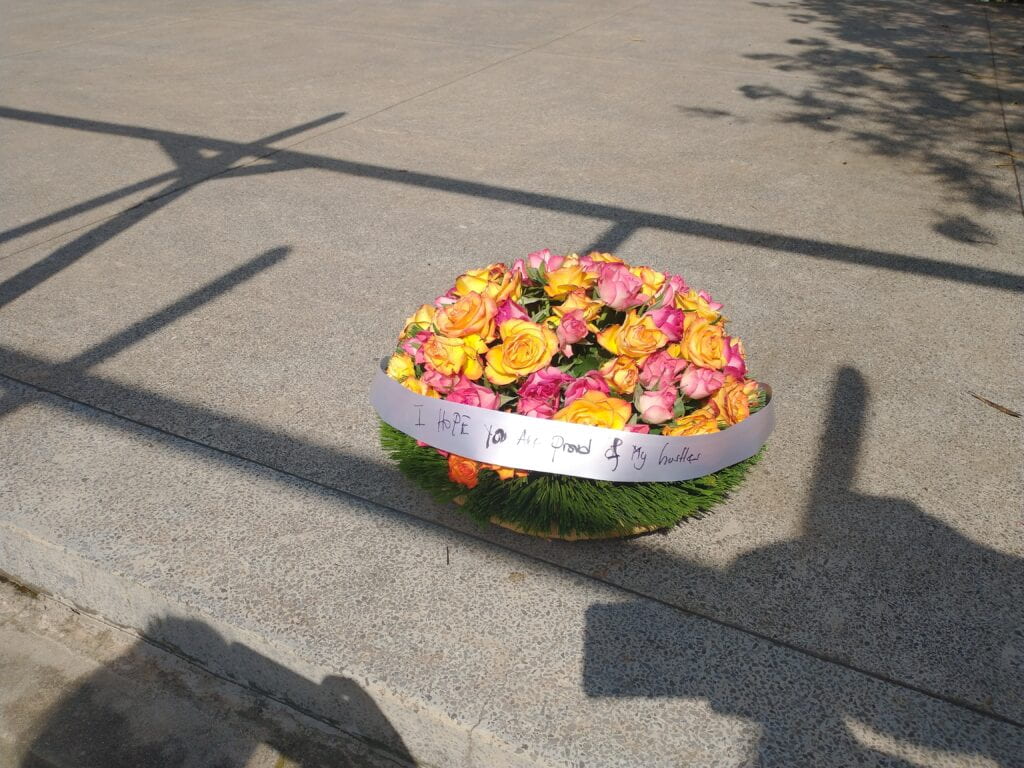
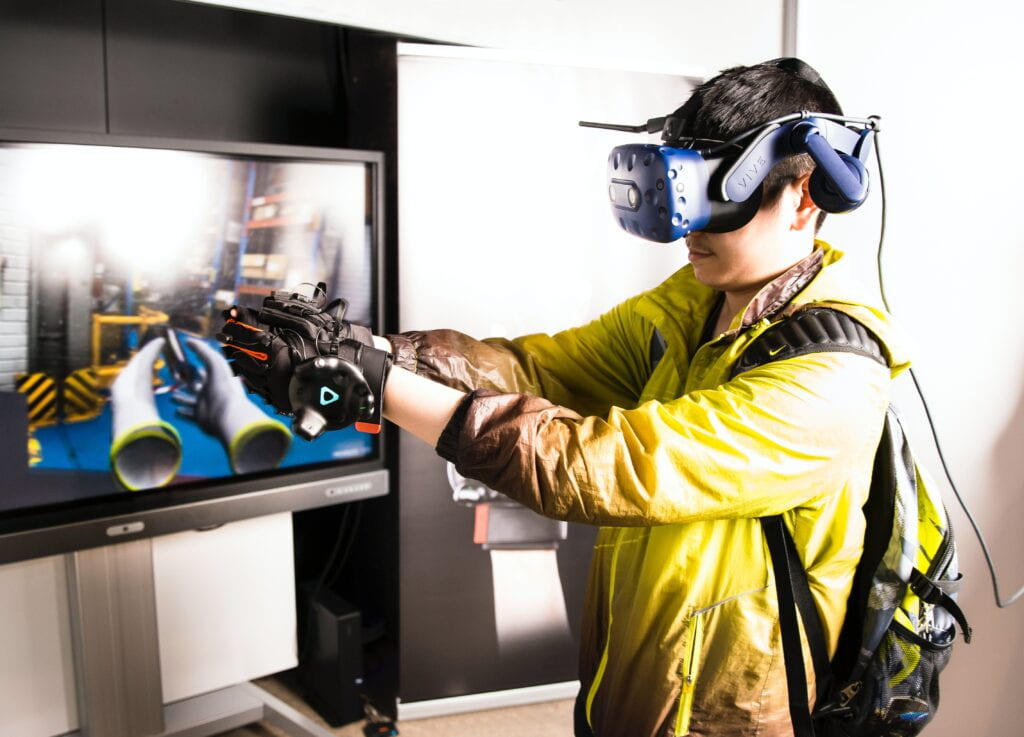
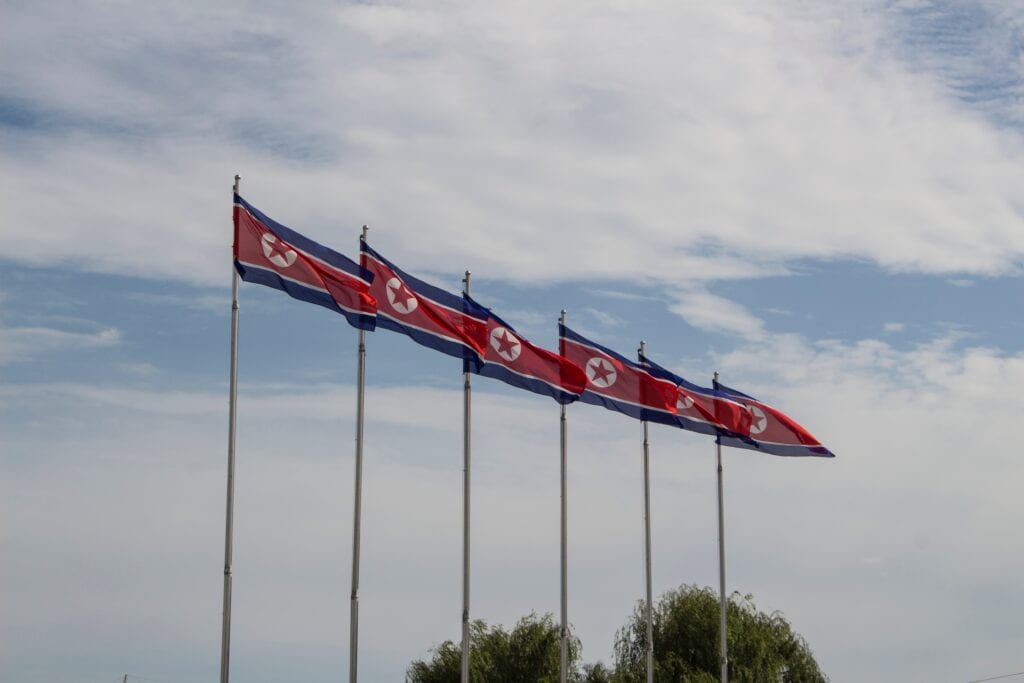 International political events since the turn of the century have severely undermined the cause of nuclear disarmament. A deal between Washington and Pyongyang may now offer the best hope to resuscitate global non-proliferation. (Photo credit: Micha Brändli on Unsplash)
International political events since the turn of the century have severely undermined the cause of nuclear disarmament. A deal between Washington and Pyongyang may now offer the best hope to resuscitate global non-proliferation. (Photo credit: Micha Brändli on Unsplash)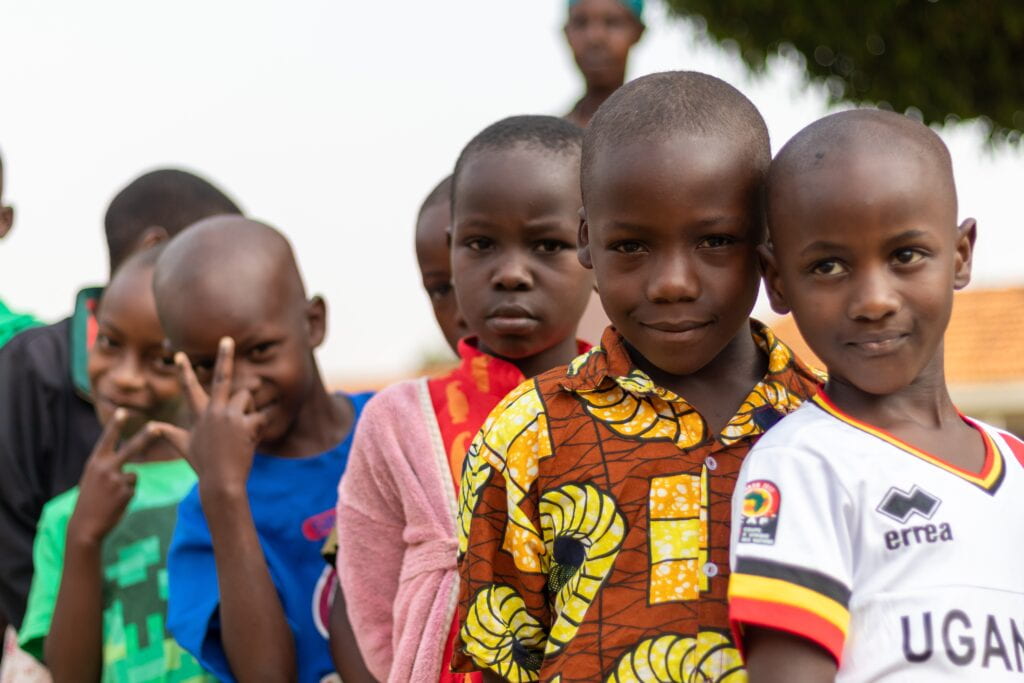
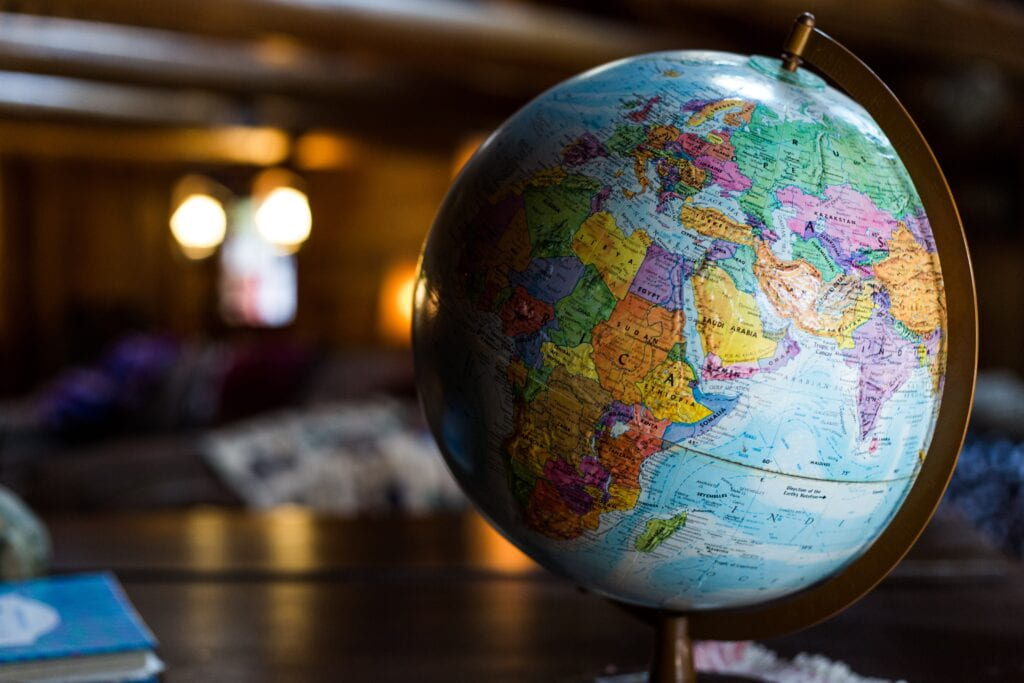 In the wake of the failed Iran nuclear deal and ongoing conflict in the Middle East, tensions with Saudi Arabia are high. The Kingdom has said it would not acquire nuclear weapons unless Iran did so first. How would a nuclear Iran affect the balance of power in the region? (Photo credit: Kyle Glenn on Unsplash)
In the wake of the failed Iran nuclear deal and ongoing conflict in the Middle East, tensions with Saudi Arabia are high. The Kingdom has said it would not acquire nuclear weapons unless Iran did so first. How would a nuclear Iran affect the balance of power in the region? (Photo credit: Kyle Glenn on Unsplash)